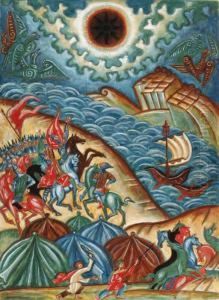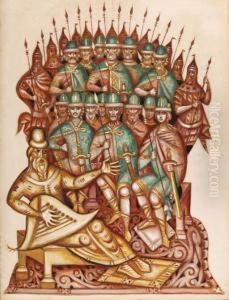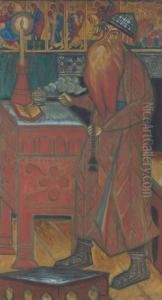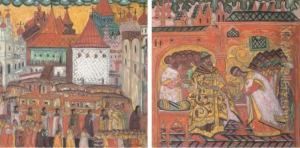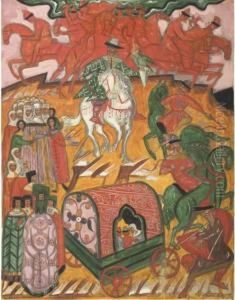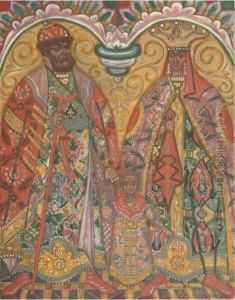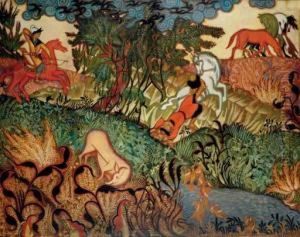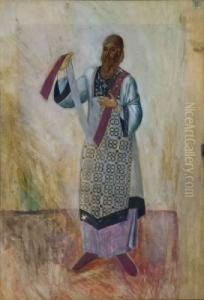Dmitrii Semenovich Stelletskii Paintings
Dmitrii Semenovich Stelletskii was a notable Russian artist, architect, and art historian, born on December 13, 1875, in Kiev, then part of the Russian Empire. Stelletskii's multifaceted career spanned a period of great change in Russia, from the final years of the tsarist regime through the revolutionary period and into the early Soviet era.
Stelletskii studied at the Moscow School of Painting, Sculpture and Architecture, where he developed his skills in painting and architecture. After his studies, he became interested in the ancient Russian art of icon painting and began to study and restore old Russian frescoes and icons. His commitment to traditional Russian art forms was not just academic; it was also reflected in his own creative work, which often incorporated stylistic elements of medieval Russian art.
In the early 20th century, Stelletskii became involved with the Mir Iskusstva (World of Art) movement, which sought to promote Russian cultural heritage and was associated with figures such as Sergei Diaghilev and Leon Bakst. The movement played a significant role in the resurgence of interest in traditional Russian art forms.
Following the Russian Revolution of 1917, Stelletskii's position became more complicated. The new Soviet government was initially suspicious of artists with pre-revolutionary ties. However, Stelletskii's expertise in the field of Russian art history and his efforts to preserve Russian cultural heritage earned him a place in the Soviet art establishment. He was able to continue his work, albeit under the watchful eye of the state.
Stelletskii's contributions to Russian art were not limited to his own creations. He was also an educator, teaching at institutions such as the VKhUTEMAS (Higher Art and Technical Studios), where he influenced a new generation of artists and architects. His scholarly work, particularly on icon painting and architecture, remains a valuable resource for understanding Russian art.
Dmitrii Semenovich Stelletskii passed away on November 27, 1947, in Paris, France. Despite the challenges he faced throughout his career, his legacy as a preserver of Russian cultural heritage and an artist who blended traditional styles with modern sensibilities remains significant. His works are housed in various museums and collections, both in Russia and abroad, and continue to be studied and appreciated by art historians and enthusiasts.
